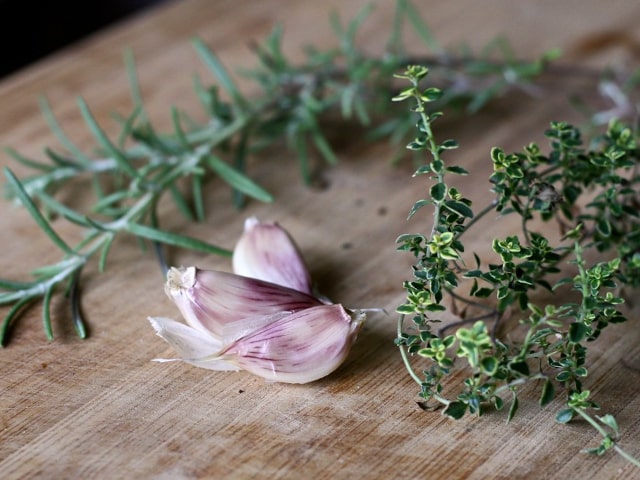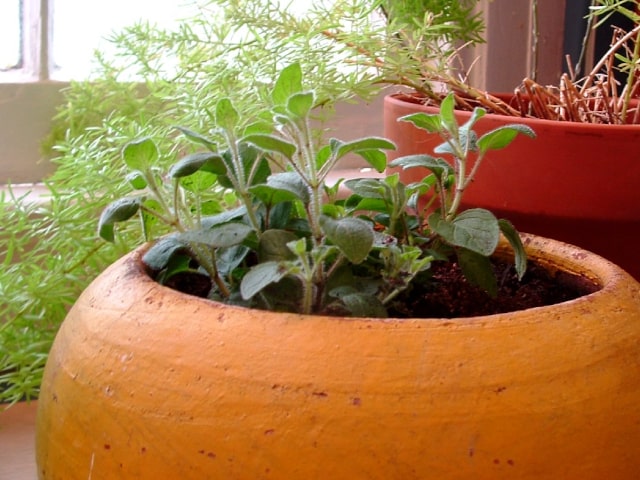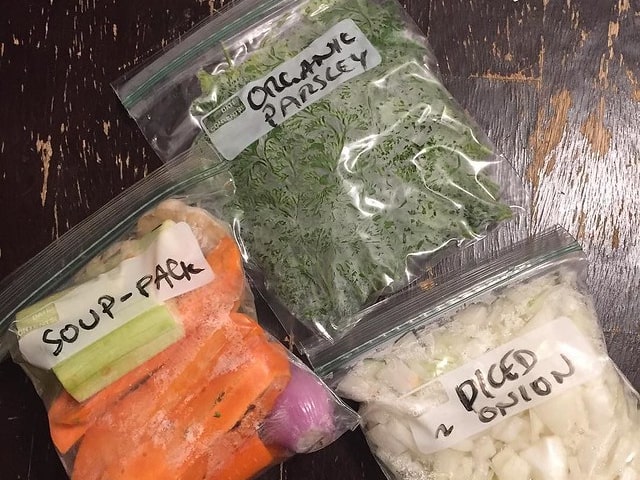
Plants can help clean the air indoors, so keeping them in your home can be very helpful. Plants are part of nature's cleaning system so they can be used very effectively to clean air and make your home healthy and clean.
These plants can help you purify the air from pollution, they can lower carbon dioxide and remove bad smell. It's all done naturally and easily. Some of these plants can help repel insects or they can invite useful wasps that can kill the parasites on the other plants.
Here are 8 aromatic herbs you can easily grow in your home to purify the air. Most of them can live in coexistence with each other, save for mint (you shouldn't plant it in the same pot or box with other plants). One great advantage to these plants is that they won't grow too tall so they can easily fit small spaces. Windowsill is a good place for them so you won't risk running into them all the time.
Rosemary (Rosmarinus officinalis L.)
This herb can be used for tea or cooking. It is also a great plant for purifying air. This herb has needle-like leaves and it's an evergreen. It's possible to keep it indoors through the whole winter and it will give you a pleasant aroma the whole time.
Most plants with needle-like leaves are great air purifies, especially when it comes to humid winter air. These plants breathe carbon dioxide and exhale oxygen. In addition to this, Rosemary can help humans improve cognitive function and shield the brain from free radicals.
To have a benefit from it, all you need to do is to place it somewhere in the room. Rosemary will purify the air and it will also exhale some of its essential oils in the room.
Lavender (Lavandula spica L.)
This is a great plant for air purification, bit it's important to check if you are allergic to it before you use it. This plant is a great choice for your house. It is an excellent insect repellent, its aroma relaxes the lungs, which helps you sleep better during night and the aroma also helps you if you suffer from anxiety.
Lavender loves sunlight, so it's best to keep it on a windowsill. It won't get enough light starting from late autumn so you should collect the seeds when it withers and reseed the plant in early spring. This plant grows best in a sandy and not too rich soil. This is why you should exclude compost and fertilizers. Keep it in a pot with good drainage. It's important not to let the roots drown or the plant may die.
Basil (Ocimum basilicum L.)
Basil is a popular herb and spice and it can help you purify air in your home. It grows in Asia and North Africa but it can easily be cultivated in most climates. This herb grows about 1-2 feet long. It has wide leaves and small white blossoms.
Basil has small fruit in the form of 4 seed nuts. These nuts easily dry and and drop by themselves in the autumn. You should collect them and reseed your plant the next year.
The plant has a pleasant peppery taste and rich aroma, but it can also be used as herbal tea. You can gather some of its leaves to be used for the salad.
Mint (Mentha spicatta L.)
This is an excellent plant for indoor planting and an excellent herbal tea for winter. There are many Mint subspecies, including plants great for cooking with dry beans, or those great for baking meat, and there are also those which contain fragrant oils used in perfumery and scent lamps, and more.
All of these subspecies are great for several uses. They purify the air and make it easier for people with lung diseases, they give pleasant aroma, they make great herbal teas or a tasty spice for cooking and they attract a special type of a small wasp during blooming, which kills some parasites of the other plants.
Mint likes sun and water but remember: it grows very slowly. To propagate this plant, you can cut one branch and leave it in a glass of water for about a week. It will grow strong roots and you can plant it everywhere. You will often see that from the main root system there are additional spin offs growing. You can replant them elsewhere. One word of caution: Mint has very strong roots which can kill other plants if you plant them nearby. This is why you shouldn't grow anything else in the same pot or a box.
Jasmine (Jasminum officinale L.)
Jasmine has a very pleasant aroma and it can also be used as a tea - all you need to do is to take some petals and boil them in water; cover for 10 minutes and use. In China and India, Jasmine is often mixed with green tea leaves and tumbled until the tea absorbs all the fragrance from jasmine.
This is a great air purifier plant. Another advantage is that it's not expensive. It opens its flowers between 6 and 8 PM, when the temperature is lower and the sun is not that strong.
Geranium (Pelargoniums)
There are more than 200 kinds of Geranium. They are all great for several things. They can purify the air, they have excellent aroma (if you can tolerate it), they repel mosquitoes, they look great when blooming, they don't attract most usual plant parasites.
To propagate them, start with a detached cutting. Simply re-plant it. It takes about two weeks for it to grow new roots. Geranium don't require much care. They can live without water for about two weeks. The more sun you give them, the more blossoms they develop. It is an excellent house plant for beginners.
Certain species have special properties: Rose geranium (Pelagonium roseum Willd.) makes a great herbal tea for people with Diabetes type two. It can help lower blood glucose levels quickly.
Coffee plant (Coffea arabica L.)
This plant can be domesticated (easier than avocado seedling), so people all around the world can grow it in their homes. There are more than 120 subspecies of Coffee plant, and the most famous of them all is Arabica.
This plant looks great indoors. It blooms in white and it smells very refreshing in the morning. The normal coffee plant can grow into a small tree, but when kept indoors in a pot, it is very compact: it grows to about 3 feet (one meter).
It will take about 4 years until it starts blossoming and it requires a lot of sun. You can even use it to grow your own coffee beans, roast them and grind them to coffee. One plant can provide about 2 ounces (50 grams) of dry coffee mass, which is sufficient for about one week.
Woodbine (Lonicera periclymenum L.)
This plant is also known as European honeysuckle or Common honeysuckle. It is very useful for indoor stairs, especially if your room has sufficient sunlight. This plant can easily be domesticated and dwarfed to grow it in your home.
You can grow Woodbine in a pot filled with wooden log or dry branch planted in the soil. The vine will climb on it and grow that way. This plant can be grown from a seed. It takes about 2 years to start blossoming. It gives very sweet scent, especially at night.
Photo credit: The Croft




0 Comments